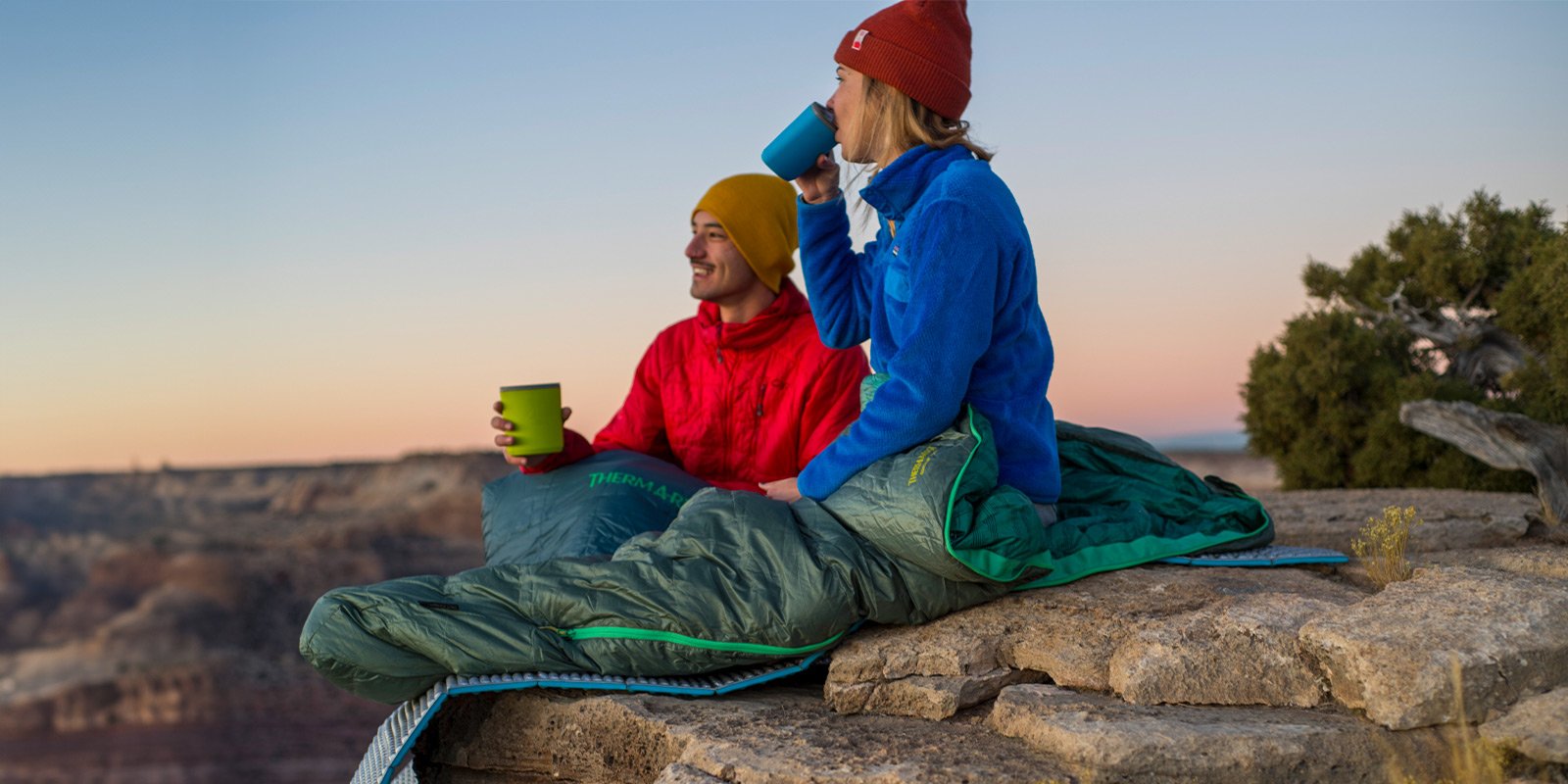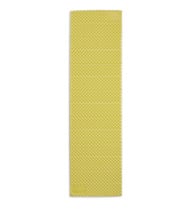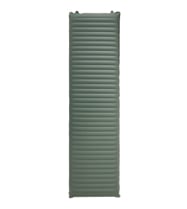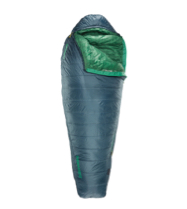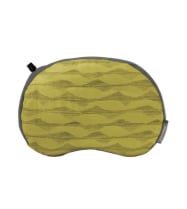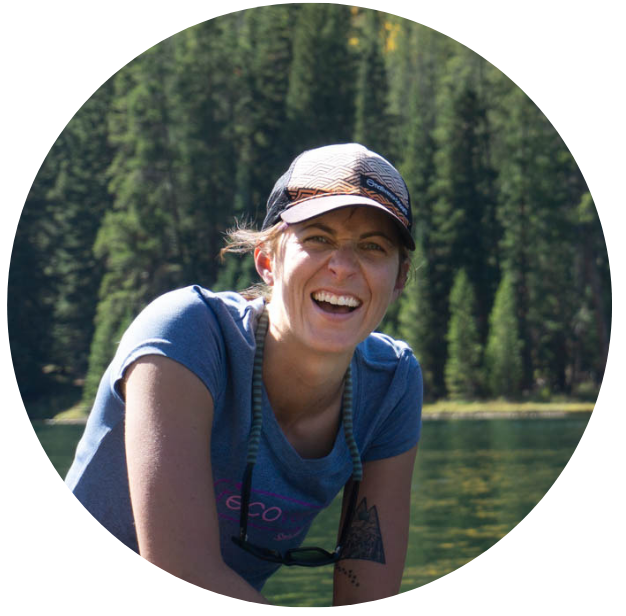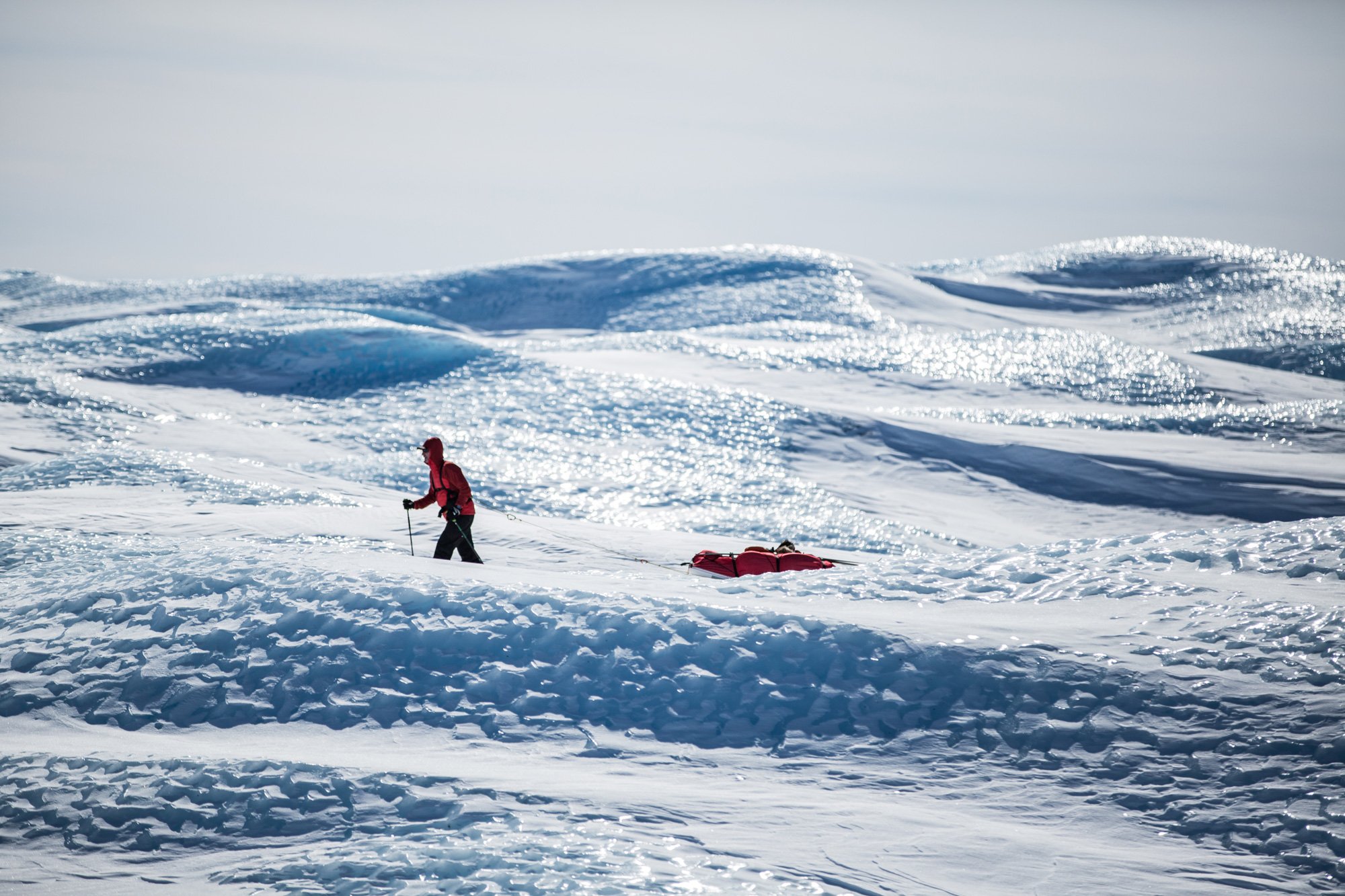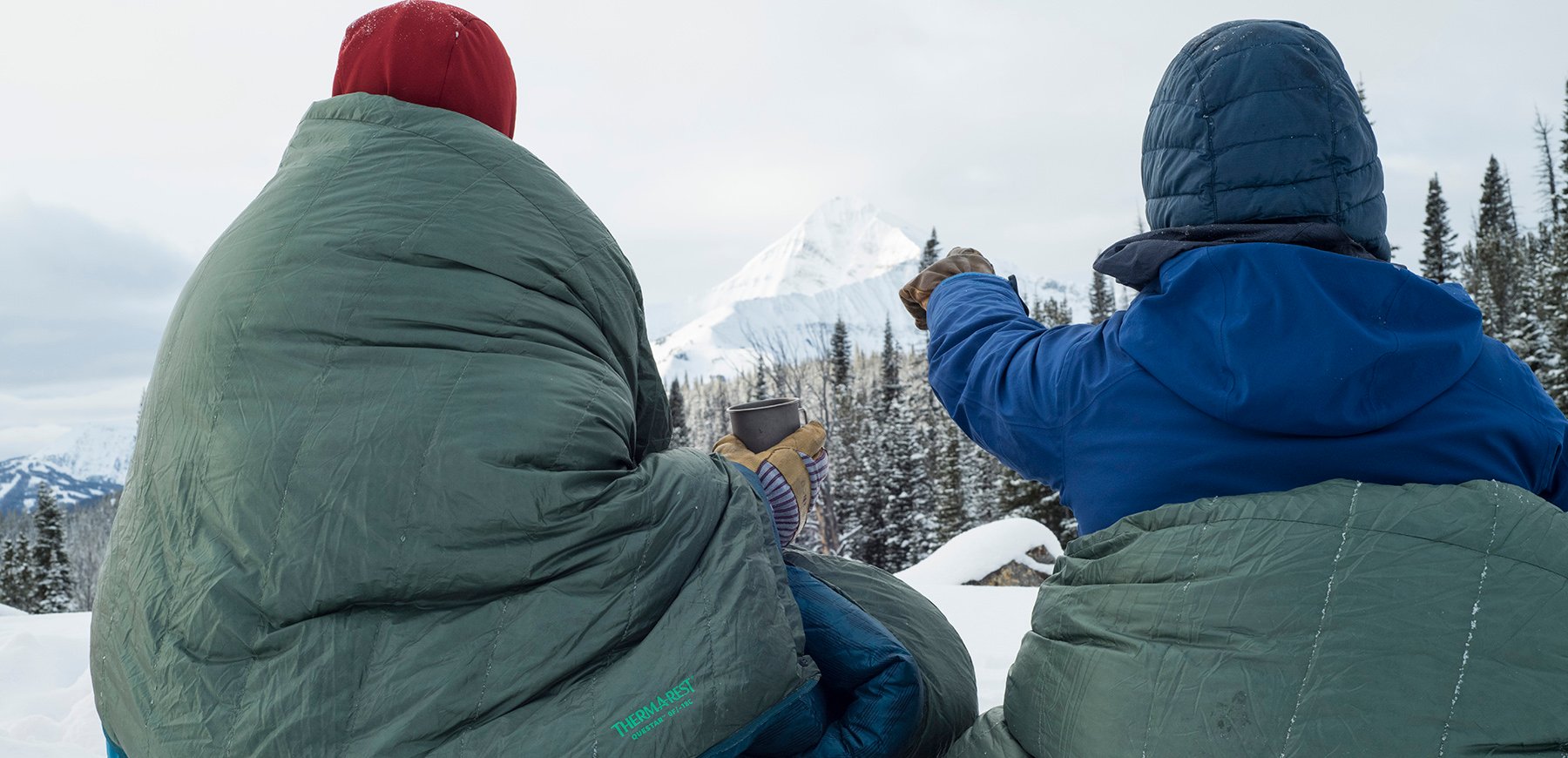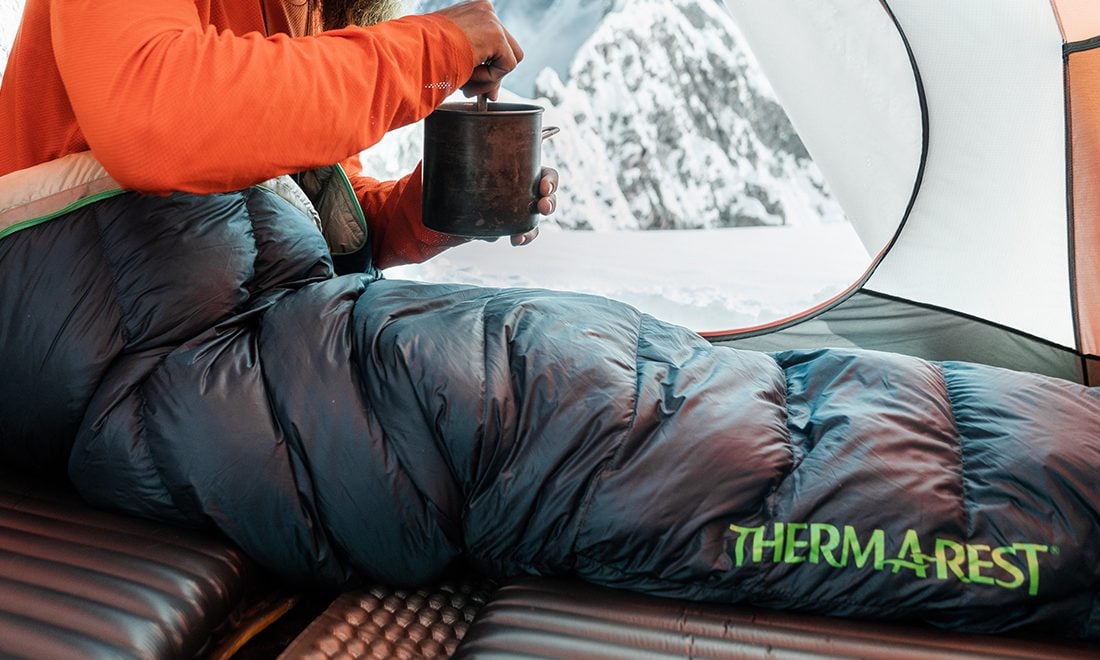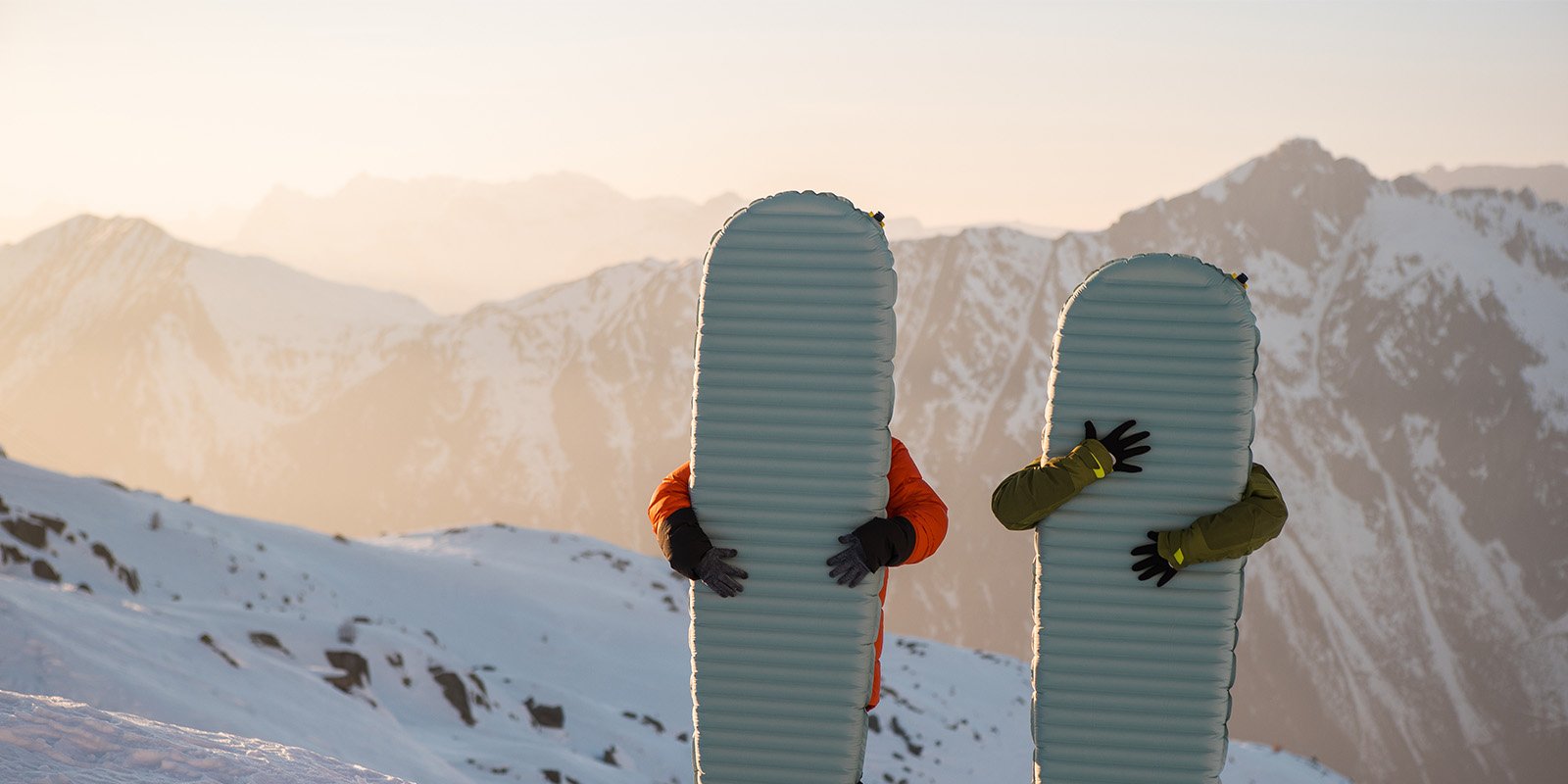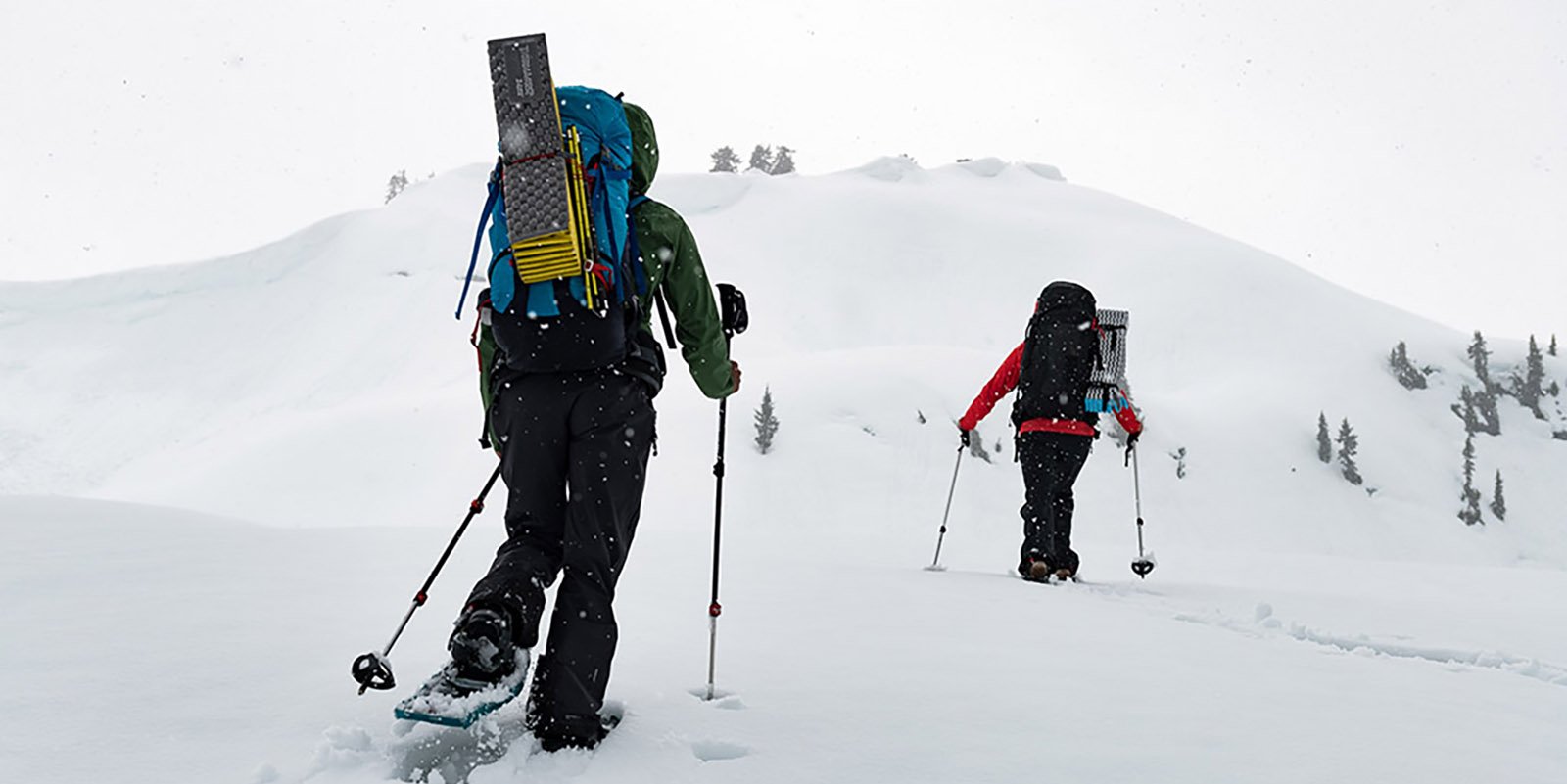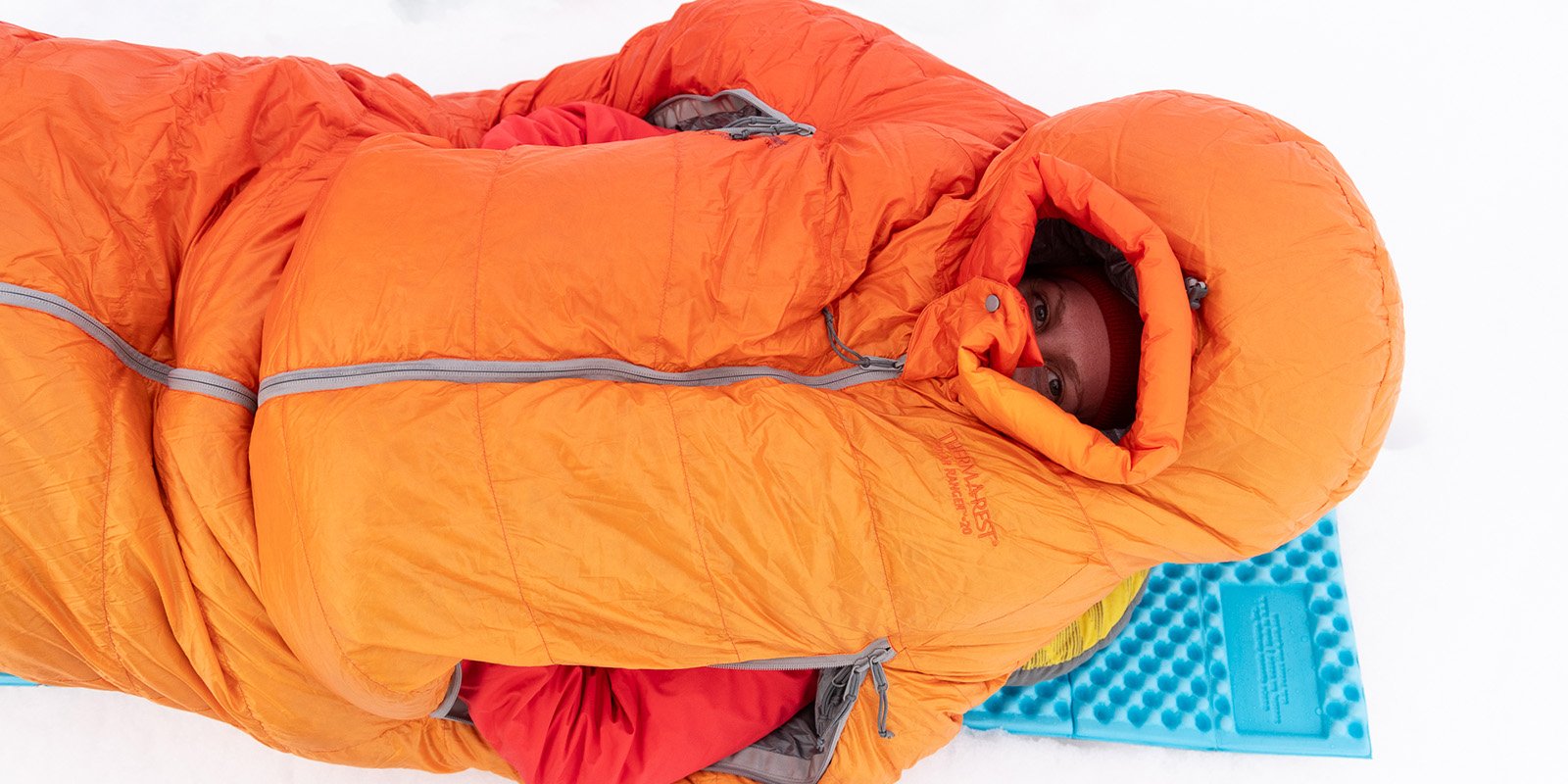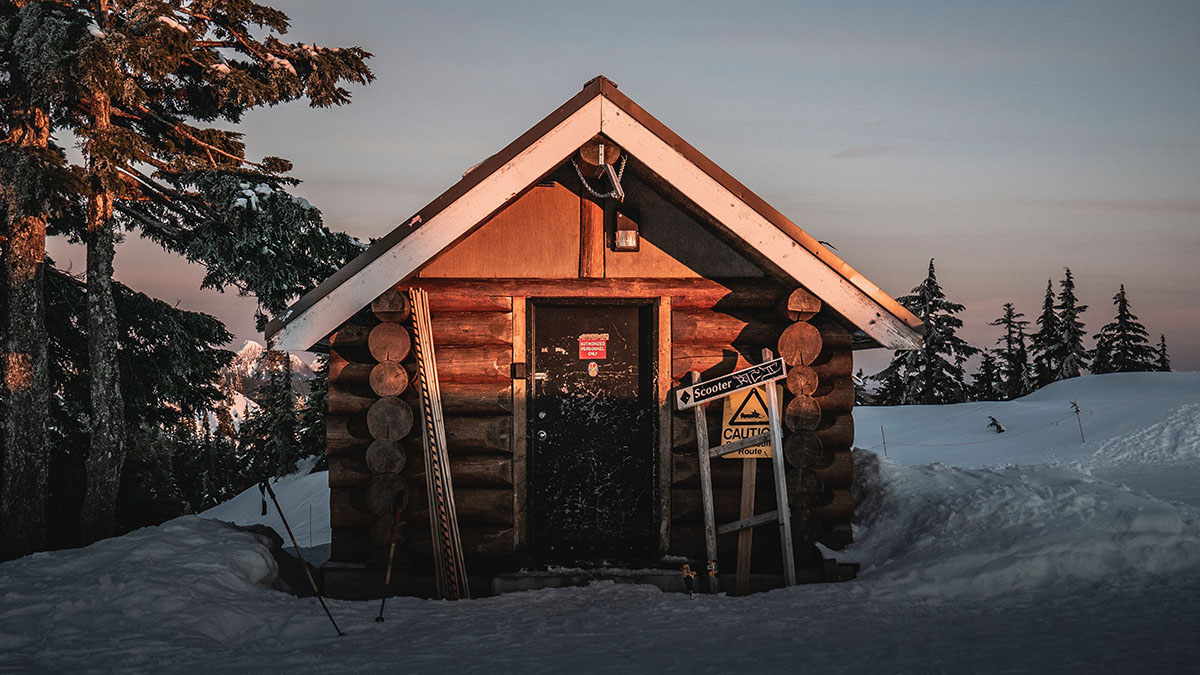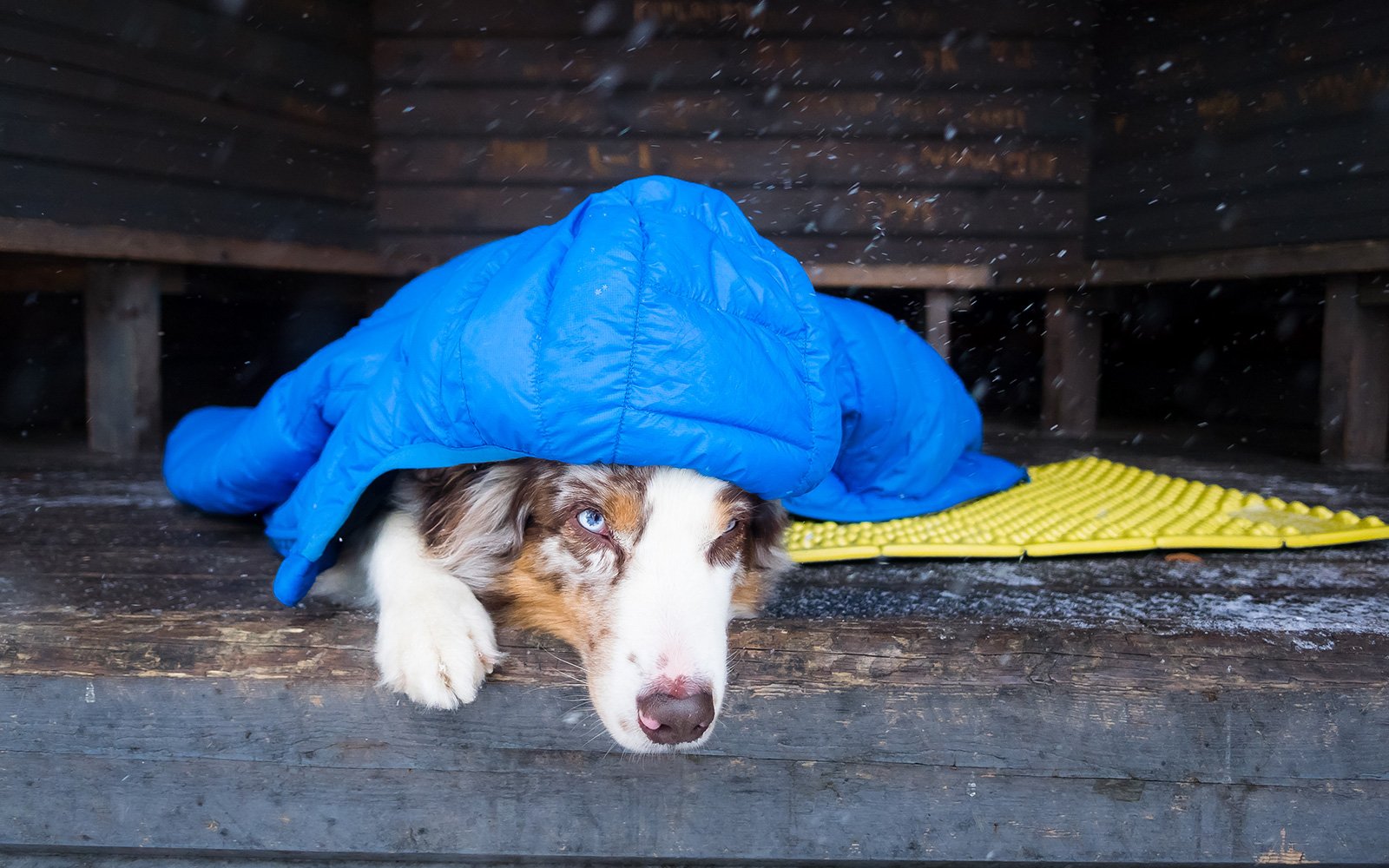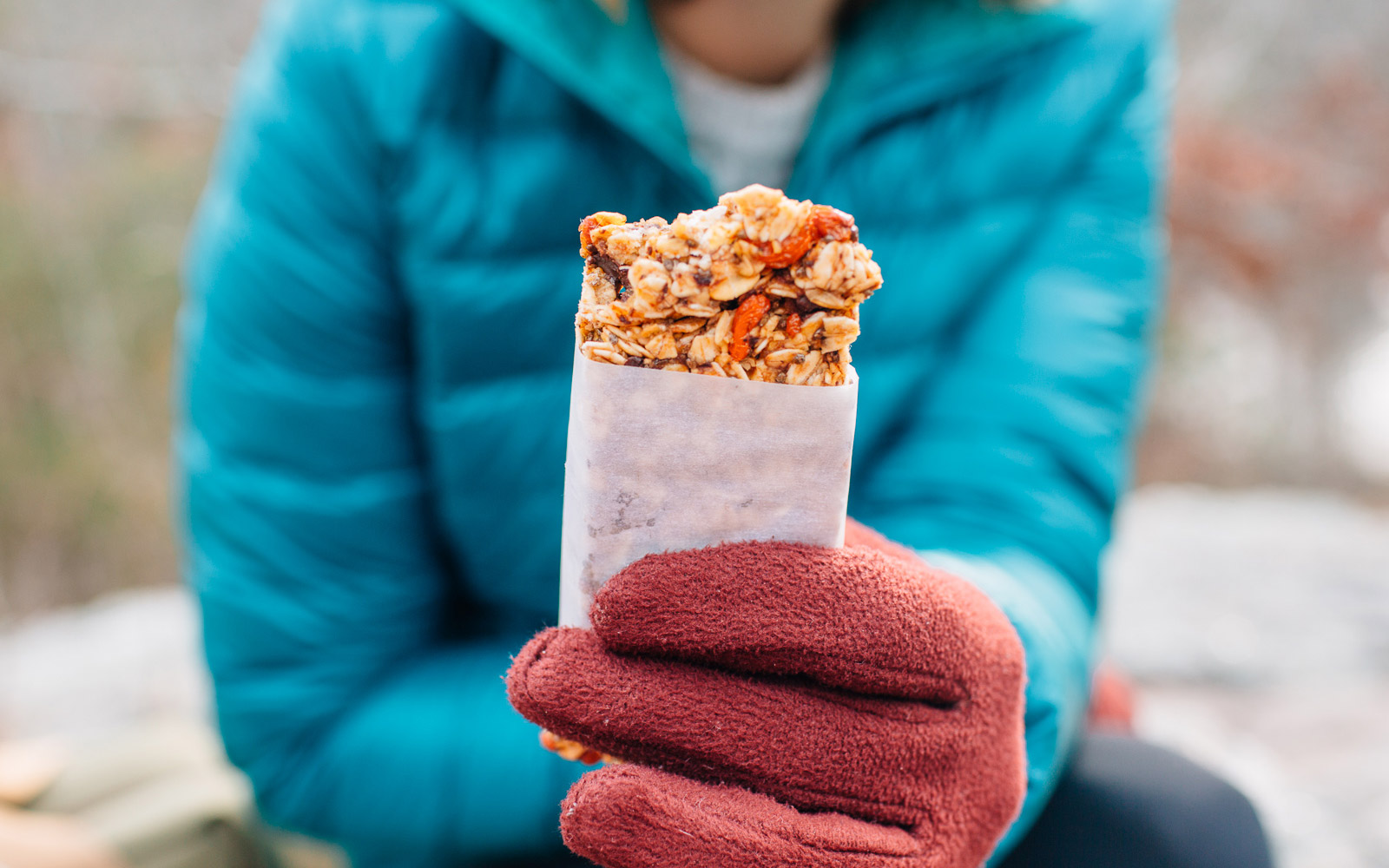The desert offers the perfect training ground for a rookie adventurer while also providing plenty of spice for those who like an honest challenge. After spending nearly half a decade exploring off-the-grid and in the dust, I’ve learned a thing or two about what it takes to stay comfy while camping in the desert. Here’s your guide to surviving the best season in this fantastically weird and jaw-droppingly beautiful landscape.
5 Tips for Winter Camping in the Desert
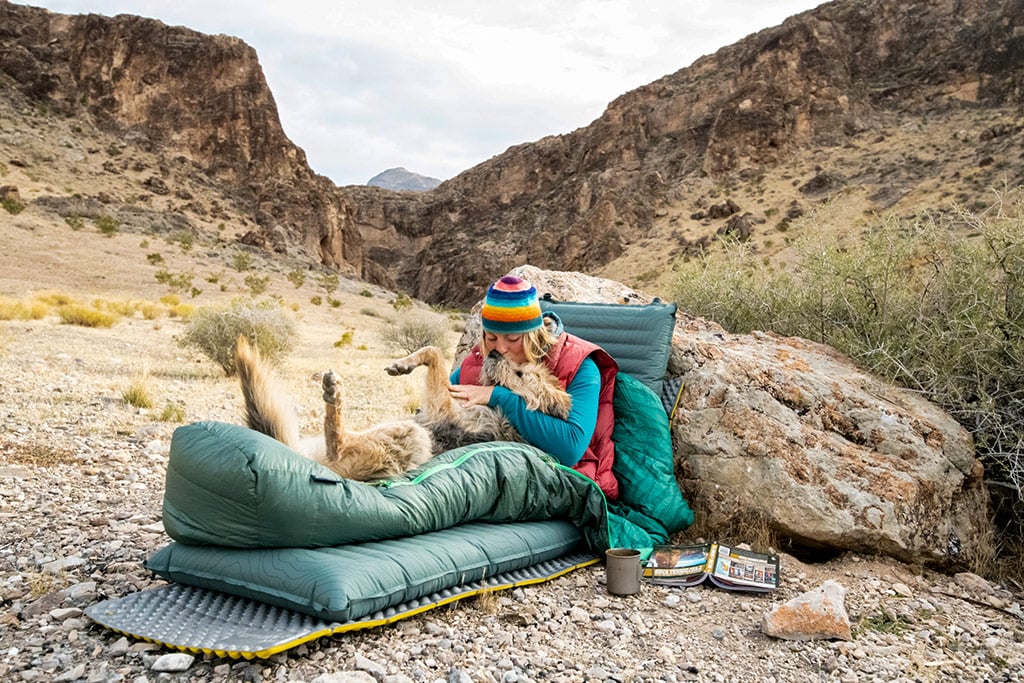 Photo by Sammy Spence
Photo by Sammy Spence1. Select the perfect spot
Winter camping is all about creating a cozy spot to set up camp. The deserts of the U.S. are littered with ample free, dispersed campsites. The key is to choose the right one for the season. You want to keep your camp protected from the gnawing desert winds. Out of the wind, you’ll not only stay warmer, but you’ll also be able to have a warm fire without the wind devouring your precious wood supply.
When you set up camp, try to position your home to receive that coveted morning light. You’ll not only greet your day with a smile (desert sunrises can’t be beat), but the early AM rays can help thaw the night away. During our stay in Escalante, we stumbled into the daylight each morning. The added burst of warmth helped us get charged and warm before descending into the cool depths of the slot canyons.
No matter the season, take care not to pitch camp in a low spot. If there’s a lot of sand or a cozy ditch, chances are you’re in a flood path. The last thing you want is a flooded tent from unexpected rain. Remember, the desert is all about drainage, you can experience an unexpected river even if the area you’re camped in doesn’t receive any precipitation.
2. Build a Good Fire
Although sky-licking flames are a sight to see, open flame doesn’t actually put off the most efficient warmth. Keep fires efficient by maintaining a healthy coal bed. First, you’ll need wood, and in this dry, scrubby environment wood is at a premium. Search for dead wood along washes, where debris may travel with the rains (remember: never pull from or burn live trees). Take care not to disturb any animal dwellings, these can often look like debris piles. If you see scat, leave it be.
Supplement your found supply with locally-sourced, pre-chopped logs. Locally sourced wood limits the risk of introducing invasive plant-borne pests and disease into this delicate environment. Also, before heading out into the desert, check with the local ranger station regarding any fire regulations and bans.
A good coal bed takes a watchful eye. Keep burning logs tight to ensure the coals continue to smolder and build heat. When the flame dies down roll logs over and together to expose the burnt, warm bottoms, then add a new log. Always put your fire completely out before calling it a night. Either drown it in water (a precious commodity in the desert) or use a shovel and bury the fire with dirt.
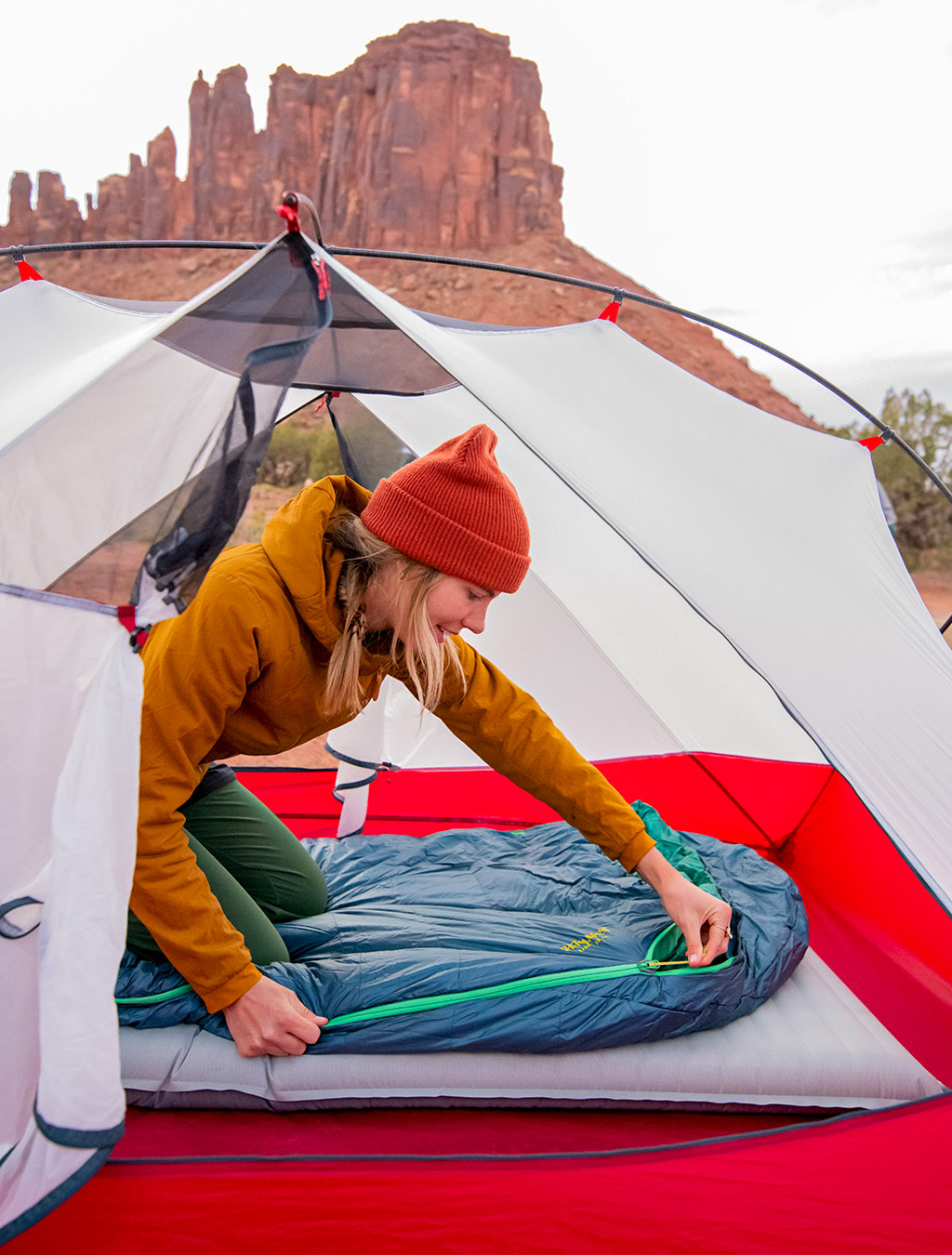 Photo by Sammy Spence
Photo by Sammy Spence3. Sleep Soundly with a Four-Season System
On one particularly brutal night, along the North Rim of the Grand Canyon, we endured 30 mile-per-hour winds, 30-degree temperatures and driving rain all night long. Despite the lack of sleep from a noisy tent, Rami and I stayed toasty in our Parsec sleeping bags. “At least we are warm!” We joked through the howling noise.
Deserts are known for heat, but temperatures regularly drop well below freezing in the winter. Even in October, temps can dip into the teens at night. Instead of letting my teeth chatter through the night, I stay cozy with a four-season sleeping bag and a warm sleeping pad.
For your pad, the R-value, or insulation value, matters in the winter months. If your sleeping pad doesn’t cut it, a Z-Lite SOL is an awesome, cost-effective way to boost the R-value of your sleep system while also protecting your air pad from sharp desert-y things. It also makes for a great yoga mat, sitting pad and doggie bed.
Even when we spent nights in my camper, we still used our sleeping bags unzipped as a warm down layer. The added boost of warmth gave us a cozy night’s sleep each night. A good night’s rest meant we had the energy to tackle the next day’s objective. When the gnawing wind and dropping temps got us down, we simply pulled our bags into the elements, allowing us to stay out and enjoy the beauty around us.
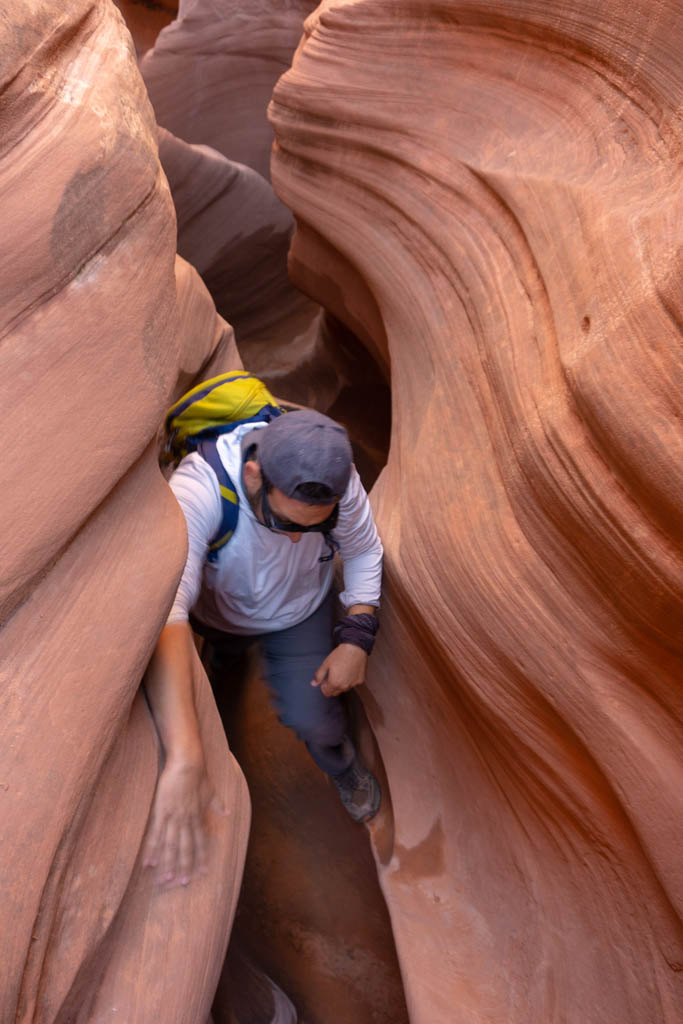
4. Make the Most of Daylight
We immediately fell into the habit of heading to bed shortly after the sun went down and greeting the rising sun every morning. I’ve never seen so many consecutively beautiful sunrises as I did in the desert. It felt as if we were tapping into this unknown world where it was just us and the landscape lit up in fiery reds. Imperial Point on the North Rim of the Grand Canyon and the backroads of Escalante were our two favorite spots to take in a desert sunrise.
Opt to get up at first light and make the most of the short days. The warm hues of the desert landscape make for killer sunrises that you can’t get anywhere else on earth. Start activities early in order to maximize daylight (and fun). In winter, you can also find solitude on some of the more popular trails if you’re an early riser. It’s a win-win all around.
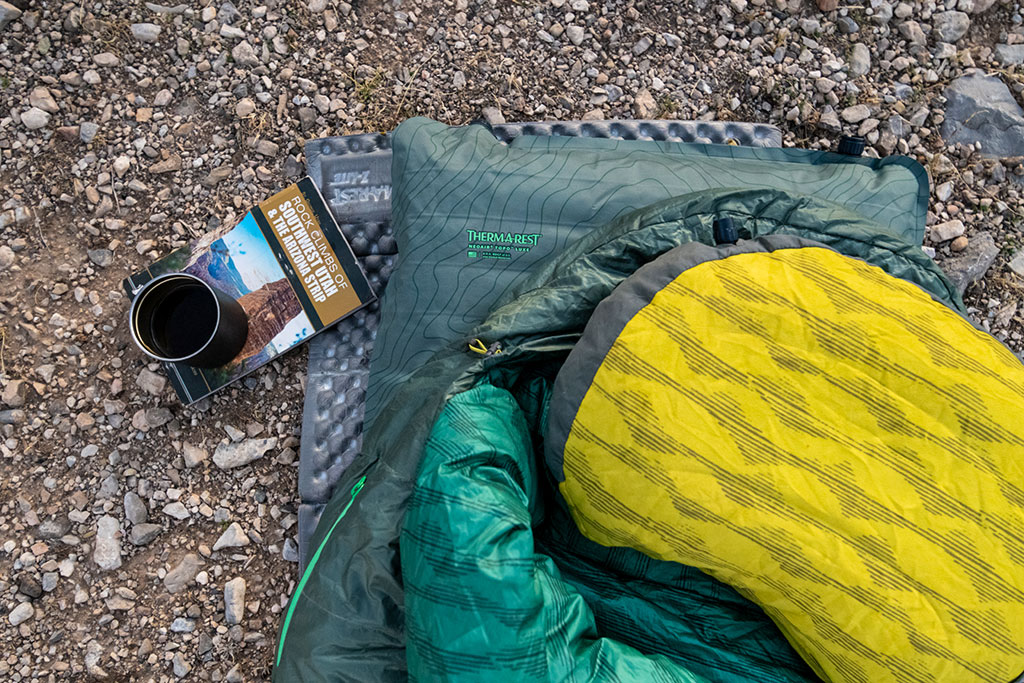 Photo by Sammy Spence
Photo by Sammy Spence5. Layer up and layer right
Temperature swings are real in the desert. Even with a weaker sun, there can be a 30-degree difference between day and night or shade and sun. Be prepared with plenty of UV proof layers to block out the intense, daytime rays. A light, versatile layering system will serve you well. Always carry a waterproof wind layer and puffy layer in case winds pick up or bad weather rolls in.
If you plan on exploring canyons, a pair of gloves come in handy. Sandstone rock absorbs and releases heat quite rapidly, meaning if the rock is in the shade for most of the day, expect it to be cold. Abrasion-resistant gloves help combat cold fingertips while also allowing you some grip against the rough sandstone.
Most people pack up their tents for winter, but in the desert, you’ll be delighted by warm tones and bright sun. This winter, skip the snow-packed forests and head to the desert for a camping getaway unlike any other.
Related Posts:
- Winter Sleeping Pad: How to Choose
- Tips for an Ultralight Winter Backpack
- Why You Should Visit National Parks in Winter
Updated. Originally Published November 15, 2018.
